
- Menu
-
-
Business
-
Industrial
-
Power + Energy
-
Retail
-
Semiconductors
-
Support
Close -
Product
|
Featured
|
How-To
|
Parts &
|
Remote Quick Check
There are four conditions that can cause a remote to function improperly :
To determine which of these conditions is causing your problem, follow these steps:
Digital Camera test using a phone camera
If you have any digital camera (including a phone camera), you can test any remote. To test the remote, follow these steps:
Test Another Remote on this TV
If the TV has another remote that is known to work on this TV, you can test that remote on the TV. To test a second remote on the TV, follow these steps:
If the TV turns on, the problem is in your Toshiba remote. If the TV does not turn on, the problem is in the remote sensor.
See the troubleshooting tips under each of these items to restore your TV back to normal operation
Try pressing the power button on the TV itself to rule out the remote control as the issue.
Unplug the TV from AC wall outlet for 60 seconds then plug back in. Ensure that the AC wall outlet is functional by trying another appliance in the outlet.
With the TV powered on press the input button on the TV to see if there is any activity on the on screen display. If there is on screen display then switch to another fucntional input source.
Press the menu button on the TV to see if the menu appears on the TV. If the menu appears change the input source to another know good input by pressing the input button on the TV
The standard cable channels or standard over-the-air (OTA) channels often appear fuzzy or blurry on your LCD TV because of a mismatch between the resolution capability of your TV and the resolution of the analog signal transmitted by your cable company or OTA broadcaster. The signal you are getting from your cable company is a low definition 480i signal, with a resolution of approximately 640 by 480. In most cases, your LCD TV is a high definition TV with a resolution capability of 1366 by 768, 1440 by 900, or 1920 by 1080. It is this mismatch between the standard cable or OTA signal resolution and the TV resolution that causes the problem.
Note: In many cases, even when you are viewing digital channels, the picture will look fuzzy. This happens because the signal your set is receiving, although digital, is a digitized standard (480i or 480p) transmission, not a digital high definition transmission. Again, you have the mismatch between a standard resolution picture and your high definition TV display.
There are three ways you may be able to fix the blurriness problem:
All three are described below.
Note: On some model LCD TVs, you use the Enter button to select Sharpness.
Use the Right arrow button on your remote to increase the sharpness.
Press the Exit button to exit.
Note 1: If your cable box doesn't have Component, DVI, or HDMI connections, contact your cable company to see if they have replacement boxes with these kinds of connections built in. Also, connecting using DVI or HDMI will only help on the digital channels.
Note 2: If you connect using DVI or HDMI, you must also leave your Composite (AV) or S-Video connections intact to receive standard, analog stations.
Important: If you add connections, make sure you use the Source button on your remote to change to the appropriate video source when you watch your TV.
When you connect your Blu-ray or DVD player to your TV or audio receiver, make sure turn both devices off and unplug them. Refer to the owner's manual for your player, television and audio receiver for full details and instructions.
Generic player used in images. Your player may or may not look similar and be equipped with the same inputs. Refer to the owner's manual for your player for available connections.
Connecting to TV using composite cables (Good)
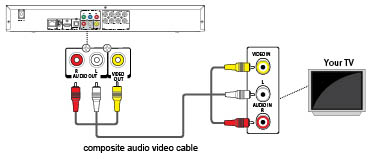
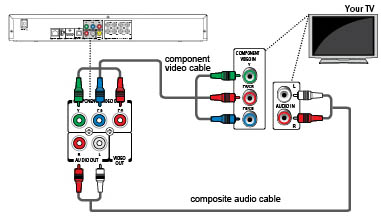
Connecting to TV using an HDMI cable (Best)

Connecting to Audio System using composite cables (Good)
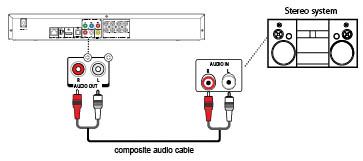
Connecting to Audio System using a digital cable (Best)
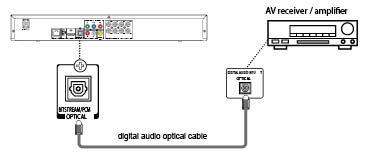
Connecting to Audio System using an HDMI cable (Best)
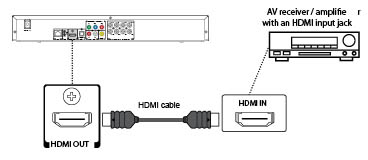
During the initial setup of the Cloud TV (or after a reset of the TV) you are taken step-by-step to connect to a network wired or wirelessly for internet access and Cloud TV Services.
If you chose to “Skip” the network setup or are connected to a wired network and wish to now connect to a wireless network, you will need to go back into the settings to connect.
To connect to a wireless network, perform the following:
The Cloud TV should now be connected to your wireless network.
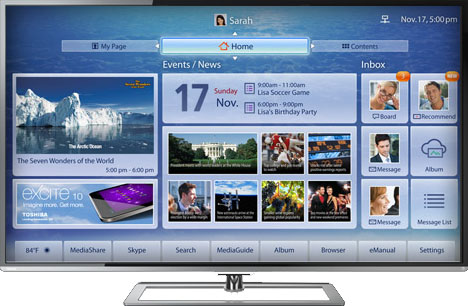
There is no video/sound from my external device (blu-ray, cable, game console, etc...) with my device connected and the TV and device turned ON.
You may be having issues viewing or hearing an external device (DVD, Blu-Ray, Game Console) or cable TV channels from the Cable Box connected to your TV. The device is connected and ON.
All TOSHIBA televisions offer the ability to connect multiple external media devices (DVD, Cable, etc…) through inputs (HDMI, Video, etc…) located on the rear of the TV. Not all TV’s are equipped with the same number and/or types of inputs. When a device is properly connected, powered on and streaming content, the TV must be on the corresponding Input for the location of the connection for that device to be able to see and hear the desired content.
When connecting external devices, be sure to follow the instructions in the Owner’s Manual. The Owner’s Manual will show you how to properly connect your devices as well as how to set the TV inputs to allow viewing of the content from the device.
The following video describes how to properly select your input based on the connected devices.

NOTE: You may also press the INPUT button repeatedly or use the arrow buttons on the remote to select the input.

NOTE: TV Model 40E210U shown for reference only, other models are similar.
Intel® Wireless Display (Intel® WiDi) is supported on this TV. Toshiba has also included peer-to-peer wireless technologies to allow direct wireless connection between the TV and Intel® WiDi equipped PC or mobile device. If your PC or mobile device has Intel® WiDi, the Toshiba Cloud TVs allow you to display the small screen content on the big screen quickly and easily.
NOTE: When connecting Intel® WiDi, device must have power turned on.
❖❖ When the TV Network Settings are set to Wireless and Intel® WiDi software is starting up, other TV applications cannot be used.
❖❖ Intel® WiDi device name of the TV can be changed from the Intel® WiDi software.
To exit Intel® WiDi:
Exit Intel® Wireless Display by pushing the disconnect button on Intel® WiDi software on the device or by pressing the EXIT button on the TV remote control.
NOTE If the device has been inactive for some time, the Intel® WiDi connection will be disconnected automatically.
The TV's Intel® WiDi device name can be changed.
Device List displays a list of MAC addresses for previously connected device that have been connected before. The maximum number that can be stored is 20.
If the list run out of space, the least-recently-used MAC address will be deleted and the new MAC address added automatically.
The registered device can be deleted one by one by pressing Red button in the List.
When doing so the following text can be seen “Do you want to unregister this device? Yes/No” (default cursor is “No”).
SMART TV A/V Remote App, Send & Play App and MediaGuide App Information
 A/V Remote App
A/V Remote App
Description: The Toshiba AV Remote App allows you to operate a Toshiba TV and Toshiba Blu-ray player, connected to your home network, from a tablet or smartphone.
Setup: After downloading and installing the App:
 Send & Play App
Send & Play App
Description: The Toshiba Send & Play App allows you to send a URL from your tablet or smartphone to the web browser on your TV.
Setup: After downloading and installing the App:
 MeidaGuide App
MeidaGuide App
Description: The Toshiba mediaGuide App is a channel guide application for tablets and smartphones. When you see what you like then send that content to your Toshiba SmartTV.
Setup: After downloading and installing the App:
Help Videos
Below are many videos that can help you with common problems.
To purchase parts for your TV or a new remote control CLICK HERE
Remote Quick Check
There are four conditions that can cause a remote to function improperly :
To determine which of these conditions is causing your problem, follow these steps:
Digital Camera test using a phone camera
If you have any digital camera (including a phone camera), you can test any remote. To test the remote, follow these steps:
Test Another Remote on this TV
If the TV has another remote that is known to work on this TV, you can test that remote on the TV. To test a second remote on the TV, follow these steps:
If the TV turns on, the problem is in your Toshiba remote. If the TV does not turn on, the problem is in the remote sensor.